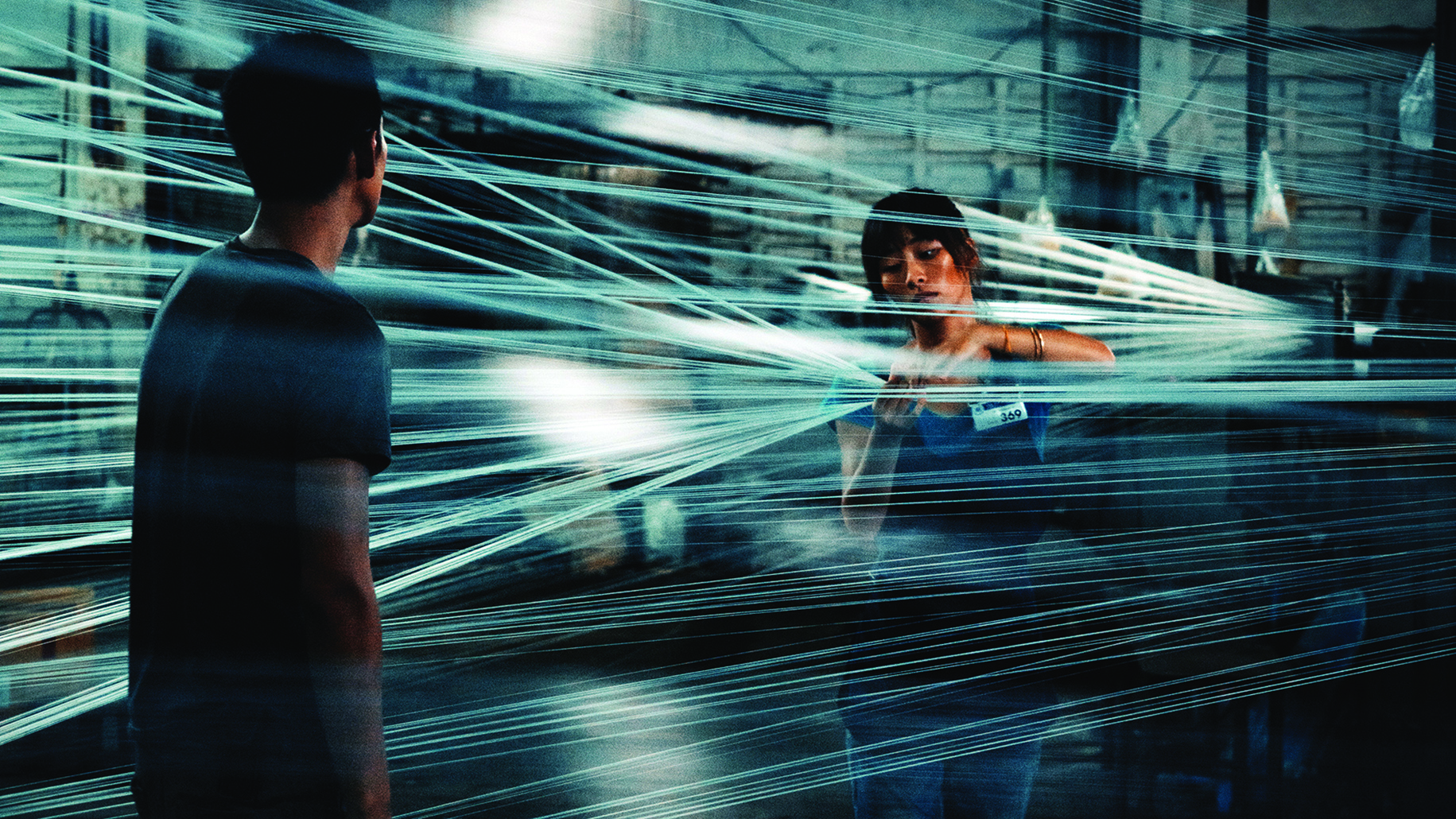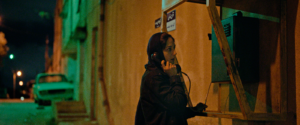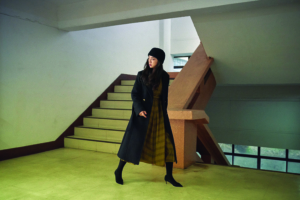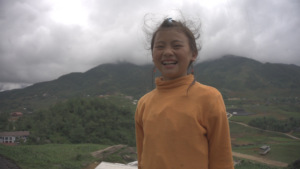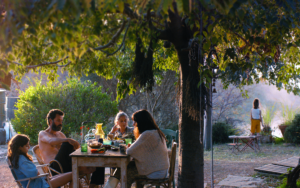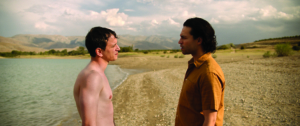Taiwan-based Burmese director Midi Z’s fourth fiction feature, The Road to Mandalay, made its debut at the 2016 Venice Film Festival and continued on the film-festival circuit, earning the Fedeora Award for Best Film at Venice and nominations in major categories at the 2016 Golden Horse Film Festival, where the director was also conferred the Outstanding Taiwanese Filmmaker of the Year accolade. Introducing the film at last year’s Brisbane Asia Pacific Film Festival, head programmer Kiki Fung described it as ‘quiet and detached, but with heart’, and noted that the international co-production (between Taiwan, France, Germany and Myanmar) takes the director’s work to a more sophisticated level. Despite having a budget larger than all of Midi Z’s previous films combined,[1]According to producer Patrick Mao Huang; see Silvia Wong, ‘Venice Buzz Title: Midi Z Talks Biggest Production to Date The Road to Mandalay’, ScreenDaily, 31 August 2016, <http://www.screendaily.com/features/venice-buzz-title-midi-z-talks-biggest-production-to-date-the-road-to-mandalay/5108890.article>, accessed 24 May 2017. The Road to Mandalay maintains the indie feel of the director’s previous efforts; the broader scope of its locales does not inhibit the intense intimacy of the narrative.
The Road to Mandalay follows a young man and woman from Myanmar on a dangerous journey as illegal immigrants to Thailand, where they hope to find a better life for themselves and send money home to help their families. In an interview after the film’s release, the director revealed that the story was based on a true tale from his home village; he also cited the experiences of his siblings, who left Myanmar as ‘economic refugees’ to work in factories in other parts of Asia, as an influence on the story.[2]Midi Z, in ‘Interview: Midi Z • Director’, Cineuropa, <http://cineuropa.org/vd.aspx?t=video&l=en&rdID=313846&did=315045>, accessed 24 May 2017. The film’s title is layered with meaning: the ‘road’ in Rudyard Kipling’s 1892 poem ‘Mandalay’ is, in fact, a British soldier’s nostalgic view of the old Burmese capital. The modern road represents what lies beyond the Chinese–Burmese border in both directions: hopefuls from Myanmar queue for the opportunity to work in China, while Chinese traders prepare to sell their wares into Myanmar.[3]Shawn Donnan, ‘Road to Mandalay: The Trade Route Vital to Asia’s Future’, Financial Times, 1 August 2014, <https://www.ft.com/content/c4d17c42-17da-11e4-b842-00144feabdc0>, accessed 24 May 2017. Any film with ‘road’ in the title suggests a journey that is never merely geographical, but often emotional and life-changing. The international plight of refugees around the world – escaping their homelands due to war, poverty and political unrest – has brought into prominence their stories of journeys to a new life. Myanmar has suffered all three, with poverty being the most acute, especially for those in rural areas. Midi Z states that many Burmese people see only three routes for escape: ‘One is to become a drug smuggler, one is to work in the jade mines and the third is to smuggle yourself into another country.’[4]Midi Z, quoted in Wong, op. cit.

The journey of the young woman, Lianqing (Wu Ke-Xi), opens the film, beginning in a raft across a river. It is a largely silent, beautiful shot, letting the audience drink in the woman’s face and the fears and hopes lurking beneath her stillness. As she is later driven by car through lush, quiet countryside, we see her face in the rear-view mirror. This conveys the sense of both escape from her old life and trepidation at what is to come, and the actor’s face expresses far more than dialogue could. This is what Midi Z does so well in his films – he lets us enjoy silences and explore for ourselves what is within the frame. Lianqing then meets the truck that is to take her illegally into Thailand, and soon encounters the young man, Guo (Kai Ko), who chivalrously offers her his superior (and more expensive) seat. They reconnect again in Bangkok, where he convinces her to work with him at a textile factory outside the city. Thus begins a love story of sorts, but not one that follows a familiar trajectory. Midi Z rips us right out of our comfort zone with a tale of conflicting passions and obsessive attraction in an unfamiliar and harsh world. To describe the film as a romance set against the world of illegal immigration feels too delicate; the themes of love and obsession are pursued in a way that sneaks up behind us and surprises us, not with a tender kiss, but with hands around our throats.
The film initially sets up the burgeoning relationship between the two protagonists as romantic love. In an early scene, Lianqing and Guo are framed in a two shot and he reaches for her hand shyly. It’s a sweet, classic romance trope that belies the antagonism to come. The pair is often depicted in such shots, with Lianqing the last to leave the frame, the camera lingering on her stillness, mirroring Guo’s silent admiration of her. In these shots, he is almost always looking at her – they rarely share an extended gaze at each other. There is an innocence and gentleness in the way Guo approaches his relationship with Lianqing early in the film, as though he recognises the trauma they have both been through in coming to Thailand, and wants to show her that love is possible in their uncertain new world. His growing affections are captured in a series of beautiful little moments in which everyday actions take on romantic significance: touching her hand while she sleeps, putting a necklace on her, pinning on her work ID tag. For him, it appears to be love at first sight, and he does so much for her without expecting anything in return. There are times when his ‘lovesick puppy’ behaviour feels almost too much and, in light of this, we realise that, if it remains unrequited, something has to give – his love will transform into something dangerous.
Guo’s ‘road to Mandalay’ is one that will lead him back to his homeland, with hard-earned money and, he hopes, a wife in tow; Lianqing’s ‘road’ leads as far away from home as possible, with a new identity and nationality.
Meanwhile, Lianqing is cultivating an obsession of her own – she is single-minded in her desire to change her life for the better – so she has no time or inclination to focus her passions on another person. When others refer to Guo as her boyfriend, she does not refute it; however, it is very much a one-sided relationship. She seems to silently accept that he is in her life, but she is too driven by her own goals to let him into her heart. The film also emphasises Guo’s shock when his chivalry, such as when he offers to take Lianqing away from a low-paying restaurant job to live with his family, isn’t rewarded. This is not so much a rejection of him as a rejection of the notion of protection and a threat to her independence. Her obsession with obtaining the Thai documents that will allow her to remain as a citizen grows in parallel with Guo’s obsession with her. She grapples with multiple levels of bureaucracy and corruption as well as ever-increasing costs, all of which, at times, come close to breaking her. Yet she forges on. She is also determined to remain in Bangkok; despite the harsh realities of the city, she is uncomfortable leaving it. There’s a sense that this goes beyond a desire for lucrative job opportunities – perhaps the countryside reminds her too much of the home she has left behind. In this, she clashes with Guo, who embraces the rural and sees its anonymity and solitude as appealing for building a life together. His vision is given credence when they are working together at the rural textile factory. Despite the dangers of factory work and their frugal existence, the film depicts the beauty of simplicity – something that Guo likewise tries to show Lianqing. In one of The Road to Mandalay’s most beautiful scenes, the workers dance together outside the factory, throwing water on one another to douse the relentless heat. It’s a rare moment of pure joy, and Guo capitalises on it to quietly declare them a couple in front of their co-workers.

Lianqing and Guo’s relationship is never sexual, or indeed even very physical. However, sex seethes under the surface of Bangkok, with Lianqing casually advised by her contacts upon arrival to take up the sex trade, which she resists for most of the film. When she finally returns to the city and begins pursuing this money-making route, desperate to reach her goals, the scene is presented as a nightmare, with her client depicted as a giant lizard. The scene is unsettling for the audience not only because it differs significantly from the stark realism of the rest of the film, but also because it’s a departure from the documentary-like approach employed by the director in his previous features. For Lianqing, it’s another means to an end in her drive to transform her life. After selling her virginity and dealing with endless bribes, hard work and transient homes, she is finally able to buy a new identity. She can literally leave behind her experiences of hardship in Myanmar as a bad dream.
Guo, on the other hand, becomes increasingly unhinged in his obsession with Lianqing and, as he descends into drug addiction, the situation worsens. It is a physical as well as emotional transformation, from the gentle, unassuming man we see early in the film into the screeching, writhing mess in later scenes. No longer fixated just on her, but also on her rejection of him, Guo is incensed when he finds out about Lianqing’s achievements – she now has has her own respectable, if modest, lodgings, a neatly pressed uniform hanging on the window to suggest that she has found legitimate, and presumably legal, paid work. The film’s desolate and shockingly violent ending delivers a punch to the gut as powerful and bleak as that in the director’s previous festival darling, Ice Poison (2014). Guo’s destructive tendencies culminate with him murdering the peacefully sleeping Lianqing and then killing himself. The final shot is a still frame of his bleeding head, devoid of music. For some audiences, this may be too much; to one reviewer, for instance, the ending ‘feels like a minor cop-out, given the tender way that Z has lured us into caring for his deeply flawed protagonists’.[5]Edmund Lee, ‘Film Review: The Road to Mandalay – Kai Ko and Wu Ke-Xi Elevate Ponderous Tale of Would-be Lovers Seeking a Better Life in Thailand’, South China Morning Post, 29 November 2016, <http://www.scmp.com/culture/film-tv/article/2050051/film-review-road-mandalay-kai-ko-and-wu-ke-xi-elevate-ponderous-tale>, accessed 24 May 2017. However, as another reviewer points out, ‘That [The Road to Mandalay] ends in a frustrating, disappointing way is not so much to its discredit [… It is the] antithesis of a satisfying, heartwarming film’.[6]Teresa Nieman, ‘Vancouver 2016 Review: The Road to Mandalay Paints a Dark Portrait of Migration’, ScreenAnarchy, 31 October 2016, <http://screenanarchy.com/2016/10/review-the-road-to-mandalay.html>, accessed 24 May 2017.
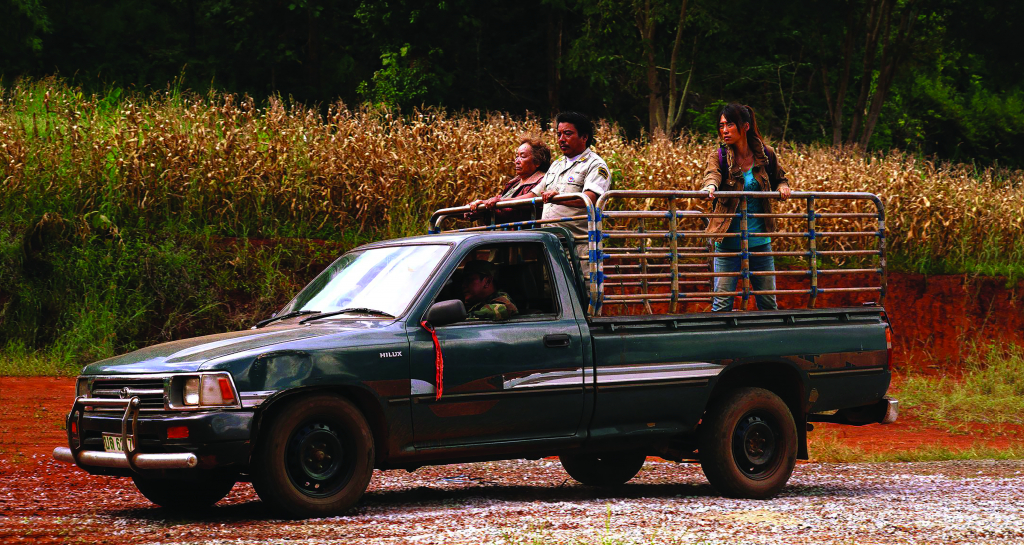
As the two protagonists’ conflicting passions unfold throughout the film, it becomes increasingly obvious that their love is doomed. Audiences may be unprepared for the severity of the ending, but not entirely unprepared to be faced with an unhappy one. As Midi Z states, ‘The tragedy lies with the man’s wish to return to Myanmar, but the woman who is more ambitious wants to earn a better living overseas.’[7]Midi Z, quoted in Wong, op. cit. Guo’s ‘road to Mandalay’ is one that will lead him back to his homeland, with hard-earned money and, he hopes, a wife in tow; Lianqing’s ‘road’ leads as far away from home as possible, with a new identity and nationality. Starting a journey on the same road – which happens literally and metaphorically in this film – does not necessarily mean individuals are on the same journey.
Indeed, the tragedy of The Road to Mandalay taps into the universal aspects of the migrant experience, common to both legal and illegal immigrants. There is an overwhelming need to find familiarity, friendship, love and community, perhaps especially so in an environment that may reject and exploit at cultural, social and economic levels. The film’s two protagonists represent different approaches to coping with this displacement and search for hope. By focusing on the individual passions of Guo and Lianqing, Midi Z provides audiences with insights into the plight of Myanmar’s people and refugees in general, while also telling a story that feels intensely personal and unique. As with the director’s other films, if audiences are willing to be enveloped by the slow-burn pace and accept the quiet beauty of the spaces between dialogue and action, they will be rewarded with images that remain long after the lights come up.
https://clickv.ie/w/metro/road-to-mandalay
Endnotes
| 1 | According to producer Patrick Mao Huang; see Silvia Wong, ‘Venice Buzz Title: Midi Z Talks Biggest Production to Date The Road to Mandalay’, ScreenDaily, 31 August 2016, <http://www.screendaily.com/features/venice-buzz-title-midi-z-talks-biggest-production-to-date-the-road-to-mandalay/5108890.article>, accessed 24 May 2017. |
|---|---|
| 2 | Midi Z, in ‘Interview: Midi Z • Director’, Cineuropa, <http://cineuropa.org/vd.aspx?t=video&l=en&rdID=313846&did=315045>, accessed 24 May 2017. |
| 3 | Shawn Donnan, ‘Road to Mandalay: The Trade Route Vital to Asia’s Future’, Financial Times, 1 August 2014, <https://www.ft.com/content/c4d17c42-17da-11e4-b842-00144feabdc0>, accessed 24 May 2017. |
| 4 | Midi Z, quoted in Wong, op. cit. |
| 5 | Edmund Lee, ‘Film Review: The Road to Mandalay – Kai Ko and Wu Ke-Xi Elevate Ponderous Tale of Would-be Lovers Seeking a Better Life in Thailand’, South China Morning Post, 29 November 2016, <http://www.scmp.com/culture/film-tv/article/2050051/film-review-road-mandalay-kai-ko-and-wu-ke-xi-elevate-ponderous-tale>, accessed 24 May 2017. |
| 6 | Teresa Nieman, ‘Vancouver 2016 Review: The Road to Mandalay Paints a Dark Portrait of Migration’, ScreenAnarchy, 31 October 2016, <http://screenanarchy.com/2016/10/review-the-road-to-mandalay.html>, accessed 24 May 2017. |
| 7 | Midi Z, quoted in Wong, op. cit. |
